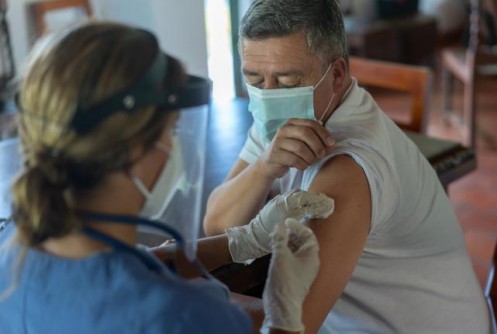Public health workers in rural America are often overtaxed by the clinical and administrative demands of their work. During the COVID-19 pandemic, they also faced a lack of support to make daily, data-based decisions in their jobs, experienced unique stressors to their well-being, and reported instances of harassment they attributed to their roles, new research shows.
The findings, published May 17 in the American Journal of Public Health, emerged in survey responses from more than 29,000 public health workers in rural and urban areas. The survey, distributed in 2021, asked about training needs, competencies, turnover and stressors.
Historically, such surveys have been sent only to medium and large health districts; this was the first time this survey included workers in small rural jurisdictions, according to lead author Paula Kett, a nurse and public health specialist.
“One of the main takeaways from our study is that rural health workers have core competencies in cross-sector collaboration, systems thinking and in engaging the community,” said Kett, who is a research scientist at the Center for Health Workforce Studies at the University of Washington School of Medicine.
On the other hand, the survey also showed that workers in small jurisdictions needed more training in collecting and making use of data for decision-making, she added. Such skills include analyzing and translating data to inform health messages to the public, allocating staff, and evaluating or guiding the implementation of public health programs and services.
“The need for using data in decision-making and communicating to the public was especially important during the COVID-19 pandemic,” Kett observed.
One survey question dealt with the day-to-day stressors that workers experienced during the pandemic. Those in rural jurisdictions reported more harassment than their urban counterparts, and attributed it to their roles.
“The public health workers were charged with asking people in the community to do things that some may not have agreed with, like mask mandates or stay-at-home directives,” Kett said.
Rural public health workers also responded that they needed more training in diversity and inclusion, and in how to incorporate these concepts into community outreach. Rural communities have generally trended white demographically, but that is quickly changing, Kett noted.
Despite the stressors, rural public healthcare workers seemed less inclined to leave their jobs than their urban counterparts, the authors noted.
“We really don’t know why,” Kett said. “That needs to be explored more. We know many rural public health staff are from the communities they serve and are rooted there, which may be part of the answer. Many public health staff are also very devoted to their jobs. And there are likely additional reasons for this finding, but we can only speculate on what they might be.”
The survey was sent to 137,000 U.S. public health workers in small, medium and large community health departments, as well as to state health departments. A larger national survey including more states and more rural public health agencies is planned for 2024, Kett said.
Source: University of Washington School of Medicine
